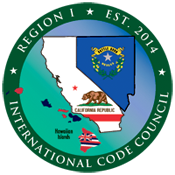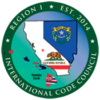Fire safety professionals understand that prevention is just as important as suppression. In a recent episode of ICC Region I Radio, host Tim Spears welcomed Chief Ray Reynolds, Fire Chief of Nevada, Iowa, to discuss community risk reduction, fire prevention initiatives, and the pressing need for thermal fuses in home oxygen therapy. With over 37 years of experience, Chief Reynolds has dedicated his career to improving fire safety and advocating for life-saving policies.
This episode dives into data-driven fire prevention strategies, firefighter health initiatives, and the ongoing effort to mitigate home oxygen-related fires, which contribute to a fatality every four days in the United States. Read on for key takeaways from the episode and how these initiatives could reshape fire safety nationwide.
Community Risk Reduction: Data-Driven Fire Prevention
Chief Reynolds has been at the forefront of community risk reduction (CRR), emphasizing the importance of data analytics in identifying fire hazards. One of his most impactful programs was the statewide smoke alarm initiative, which helped to reduce fire deaths in Iowa. By tracking fire fatalities, his team identified trends, collaborated with partners, and secured funding for preventive measures, demonstrating the power of data-driven fire prevention.
Key insights from the episode:
- Community risk assessments are important for effective fire prevention.
- The Iowa statewide smoke alarm program reduced fire deaths from 48 to 22 within two years.
- Fire departments must leverage data analytics to anticipate and mitigate risks proactively.
Firefighter Health and Safety: Reducing Cancer Risk
Firefighters face elevated cancer risks due to exposure to toxic substances during fire suppression. Chief Reynolds highlighted a firefighter rehabilitation program that focuses on post-fire decontamination.
Best practices for firefighter safety:
- Cooling firefighters post-fire to reduce exposure to carcinogens.
- Providing proper decontamination equipment at the fireground.
- Encouraging the use of baby aspirin for high-risk firefighters to prevent cardiac events.
- Advocating for improved PPE storage and cleaning protocols to minimize exposure.
These strategies align with growing industry efforts to prioritize firefighter well-being and improve longevity in the profession.
Home Oxygen Safety: The Case for Thermal Fuses
A major advocacy focus for Chief Reynolds is the prevention of home oxygen fires, a problem that leads to a fatality every four days in the U.S. A simple solution? Thermal fuses. These small, cost-effective devices shut off oxygen flow in the event of a fire, preventing rapid escalation.
Key points from the discussion:
- 46% of home oxygen providers know a patient who has died or been burned due to an oxygen-related fire.
- The Department of Veterans Affairs (VA) has required thermal fuses since 2018, reducing fires significantly.
- Iowa, North Dakota, Washington, and Missouri have taken steps to fund thermal fuses through Medicaid programs.
- A nationwide mandate could save thousands of lives and millions in healthcare costs associated with burn injuries.
This initiative highlights the need for collaboration between fire services, policymakers, and healthcare providers to push for widespread adoption of thermal fuses.
Advocacy for Fire Safety Policies: The Path Forward
Chief Reynolds is relentless in advocating for life-saving fire safety policies. His work extends beyond local initiatives to statewide and national policy changes aimed at improving fire prevention measures.
What’s next in fire safety advocacy?
- A push for all 50 states to adopt Medicaid funding for thermal fuses.
- Continued research through the American Burn Association and IAFC to track the impact of fire prevention technologies.
- Collaboration with durable medical equipment providers to integrate fire prevention measures into home healthcare.
- Expanding grant opportunities for community fire prevention programs.
Fire professionals and policymakers must work together to push for data-backed, life-saving fire prevention initiatives that go beyond traditional suppression efforts.
Listen to the Full Episode of ICC Region I Radio
This podcast episode is a must-listen for fire safety professionals, policymakers, and anyone involved in community risk reduction. Chief Ray Reynolds shares invaluable insights that can shape the future of fire prevention and firefighter safety.
🎧 Listen now to the full episode of ICC Region I Radio featuring Chief Ray Reynolds!
Watch the full episode on our YouTube Channel.

